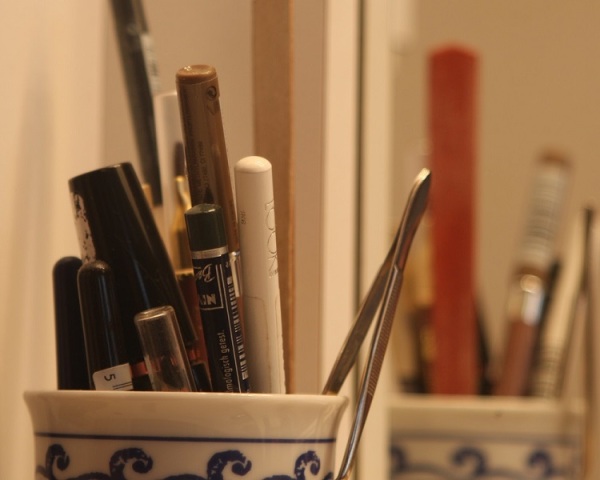Cosmetics are used by different women all across the world. But did you know that there are several types of cosmetics? Steer through this article to know the different kinds of cosmetics.
Types Of Cosmetics
Women love wearing makeup, as they feel it can help them enhance their beauty and make them feel and look more attractive and gorgeous. While some cosmetics are useful for making the skin feel soft, healthy and flawless, others assist in adding color to the skin, thereby giving the appearance of good health and youth. So, whether you want to hide the little imperfections or conceal a blemish, cosmetics come in very handy at masking the small flaws and marks on any part of the body. But then the question arises - are cosmetics efficient enough to give you a radiant and good-looking skin forever? Yes comes the reply instantly! With over a thousand different cosmetics available at your end, cosmetics are the solution to every beauty problem stated by different people. Given here are some different types of cosmetics for your knowledge. Check them out. 

Image: Jörg Weingrill@flickr
Different Kinds Of Cosmetics
Solutions
The simplest kind of cosmetics, solution cosmetics is homogeneous mixtures of soluble ingredients. These are prepared by simply filling the containers with main diluent (usually water) and mixing with the other ingredients to create the resultant cosmetic product. They can be found in the form of shampoos, body wash, hand cleansers, mascaras, eye liners, colognes, and so on.
Creams/ Emulsions
Most of the cosmetics contain raw materials that are not compatible. Hence, creams or emulsions are preferred. These are pseudo stable mixtures of immiscible liquids dispersed in another liquid. Creams and emulsions are prepared by combining three formula components, such as oil phase, aqueous phase and an emulsifier. Cosmetics like hand moisturizers, make up, hair conditioners, sunscreens, etc. are all examples of creams or emulsions.
Lotions
Lotions are less greasy and lighter counterparts of creams that come in handy for applications, wherein creams cannot be used. Lotions are basically thin creams that undergo the same production procedure as that of creams. Moreover, they can easily be applied without worrying about them getting thick as opposed to emulsions that get thick on cooling down. A few examples of lotion cosmetics include facial moisturizers, leave-in hair conditioners and moisturizing cleansers.
Suspensions
Suspensions are cosmetics that are used for overcoming incompatible ingredients. Similar to creams, suspensions are clear solutions containing visible particles, such as gelatin beads or inorganic minerals, spread throughout. Sunscreens, hand washes and shampoos are some such examples.
Ointments/ Pastes
Ointments or pastes are extremely thick products used for dressing hair and cleaning skin. They are, generally, anhydrous (contain no water), sticky and greasy.
Powders
Powders are the most common and popular form of cosmetic products. They are an amalgamation of solid raw materials which are ground together to get a fine powder. Products like baby powder, eye powder, foot powder, talcum powder, etc. are some examples.
Gels
Gels are thick, clear products characterized by a property known as “shear thinning”. That is, they are thick when new but get thin and flowable as you start applying force to use them. Common examples of gels include hair products, body washes, shaving products and toothpastes.
Sticks
Sticks enter the cosmetic product list when consumers look out for cosmetics that they would not want to touch, say, lipstick or underarm deodorant. Sticks are solid delivery forms that are delivered by rubbing them against the skin. These are usually manufactured by heating, melting, mixing and pouring solid ingredients into a mold or final container, thereby allowing them to cool until they take the desired shape.
Tablets & Capsules
Color cosmetics are, generally, found in the form of cakes, tablets or capsules. The solid ingredients are blended well with one another and pressed to get the desired shape. They are usually more expensive as they require special equipment for creating them. Compact powder, eye shadow, cheek shadow cakes, etc. are some examples.
See also
- Blackheads | Blonde Hair | Body Care | Collectibles | Curly Hairstyles | Dandruff | Dry Hair | Dry Skin | Embroidery | Emo Hairstyles
More from iloveindia.com
- Home Remedies | Ayurveda | Vastu | Yoga | Feng Shui | Tattoos | Fitness | Garden | Nutrition | Parenting | Bikes | Cars | Baby Care | Indian Weddings | Festivals | Party ideas | Horoscope 2015 | Pets | Finance | Figures of Speech | Hotels in India : Delhi | Hyderabad | Chennai | Mumbai | Kolkata | Bangalore | Ahmedabad | Jaipur
- Contact Us Careers Disclaimer Privacy Policy Advertise With Us Lifestyle Sitemap Copyright iloveindia.com. All Rights Reserved.







